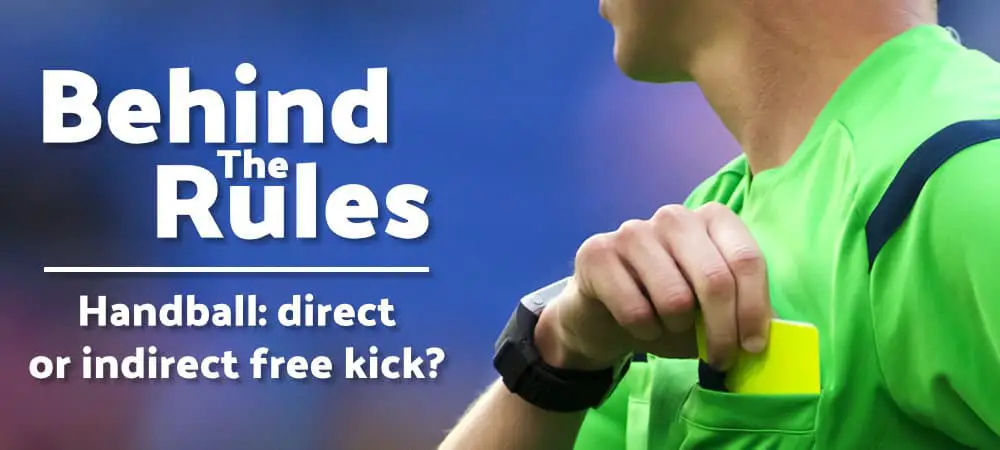Disclaimer: some of the links on this page are affiliate links. We will make a small commission on purchases made through them at no cost to you.
One of the more confusing rules in football is the distinction between direct and indirect free kicks. Handballs are a controversial topic, but leaving the controversy aside, you might be wondering how they are officially penalised.
So, do handballs result in direct or indirect free kicks? A direct free kick is awarded for a handball offence. Direct free kick offences (including handballs) that occur inside the offending players own penalty box result in a penalty kick.
The rest of this article takes a look at the official rule, the difference between direct and indirect free kicks and what part of the arm counts as handball.
What does the official rule state?
The official rule states:
A direct free kick is awarded if a player commits any of the following offences:
www.thefa.com/football-rules-governance/lawsandrules/laws/football-11-11/law-12—fouls-and-misconduct
- a handball offence (except for the goalkeeper within their penalty area)
So it’s quite clear a handball is penalised via a direct rather than indirect free kick.
But you might be wondering what happens when a direct free kick offence occurs in the penalty area. The rule states…
for direct free kick offences a penalty kick is awarded if this is within the offender’s penalty area
www.thefa.com/football-rules-governance/lawsandrules/laws/football-11-11/law-13—free-kicks
So handballs outside of the penalty area result in a direct free kick and any direct free kick offences (including handballs) committed in the penalty area result in a penalty kick.
What’s the difference between direct and indirect free kicks?
A direct free kick means the player taking the kick can score directly from the free kick. With an indirect free kick, the ball must first touch another player on either team before going into the goal. If a goal is scored directly from an indirect free kick, a goal kick is awarded to the opposing team.
We’ve established that a handball results in a direct free kick. Here are the other offences that are penalised with a direct free kick:
- A player is careless, reckless or uses excessive force
- Holding an opponent
- Impeding an opponent with contact
- A player bites or spits someone
- A plauyer throws an object at the ball, opponent or match official, or makes contact with the ball with a held object
And here are the offences that are penalised by an indirect free kick:
- Playing in a dangerous manner
- Impeding the progress of an opponent without any contact being made
- Dissent, using offensive, insulting or abusive language and/or gestures or other verbal offences
- Preventing the goalkeeper from releasing the ball from the hands
- Any other offence, not mentioned in the Laws, for which play is stopped to caution or send off a player
The following offences result in an indirect free kick inside the penalty area if a goalkeeper:
- controls the ball with the hand/arm for more than six seconds before releasing it
- touches the ball with the hand/arm after releasing it and before it has touched another player
- touches the ball with the hand/arm, unless the goalkeeper has clearly kicked or attempted to kick the ball to release it into play, after: it has been deliberately kicked to the goalkeeper by a team-mate
- receiving it directly from a throw-in taken by a team-mate
Source: www.thefa.com/football-rules-governance/lawsandrules/laws/football-11-11/law-12—fouls-and-misconduct
What part of the arm is handball?
I’ve written an article that looks at this exact question that’s worth checking out.
To give you the quick answer, a new rule introduced in 2020 defines the boundary between the arm and shoulder to be inline with the bottom of the armpit.
Thanks for reading!
